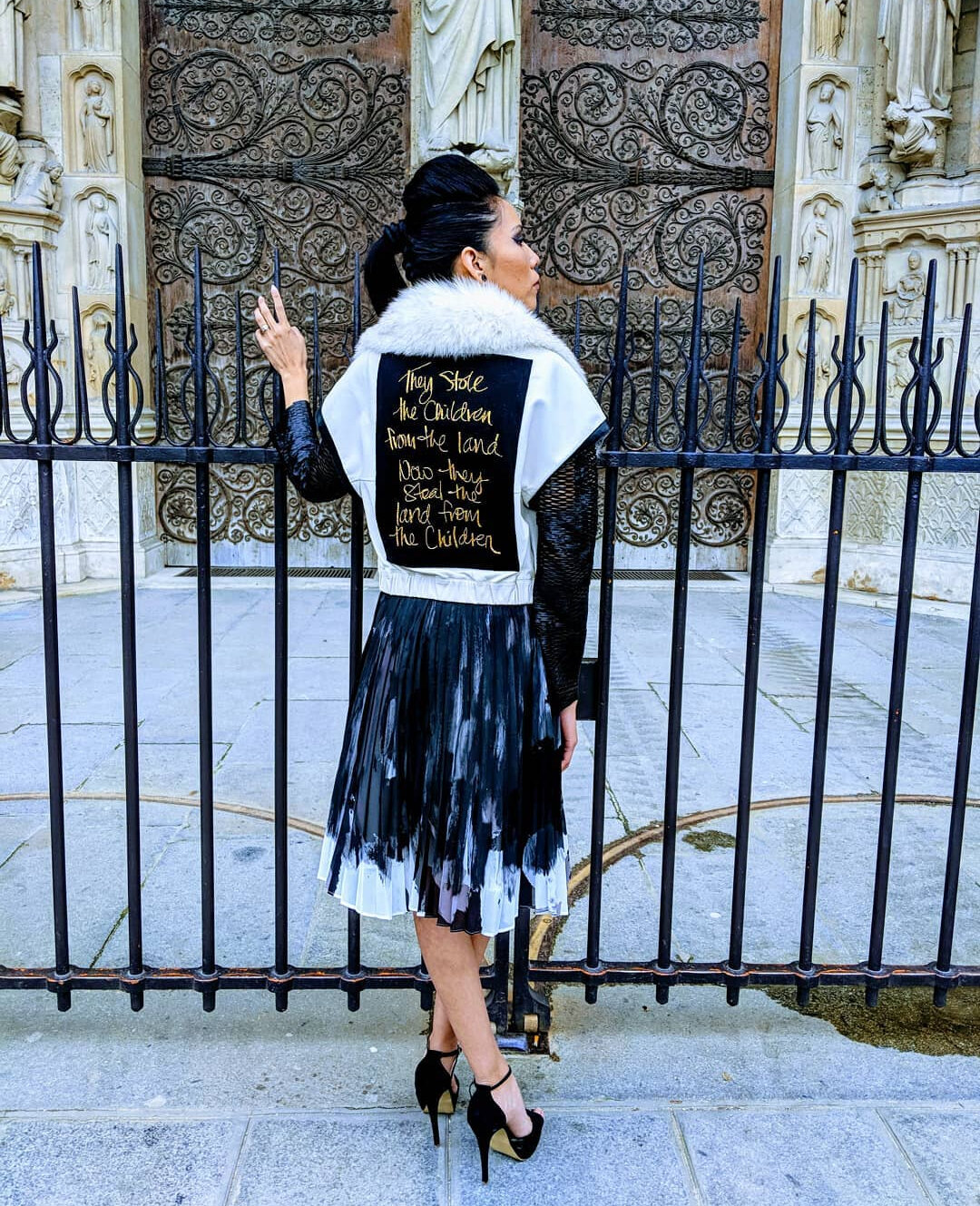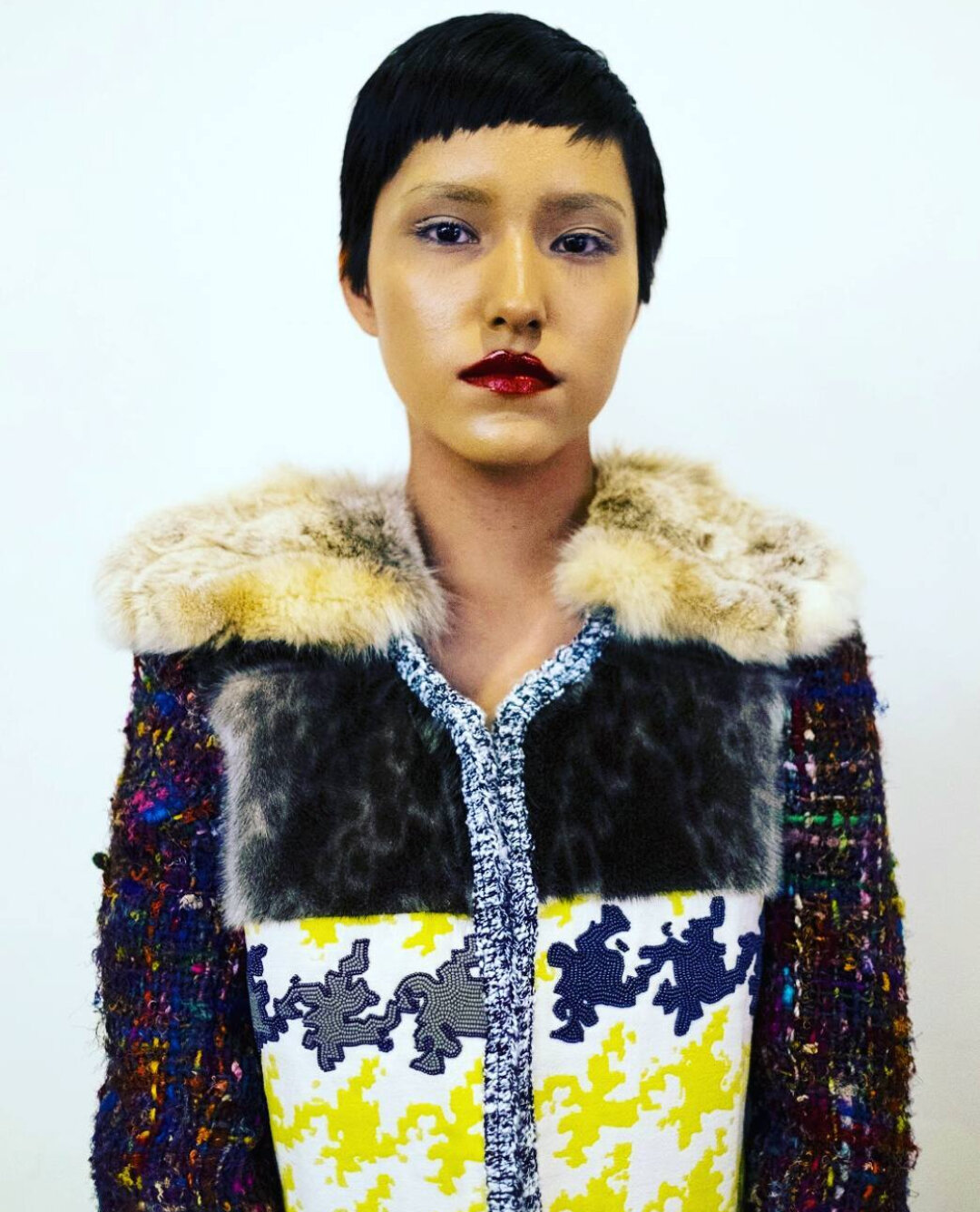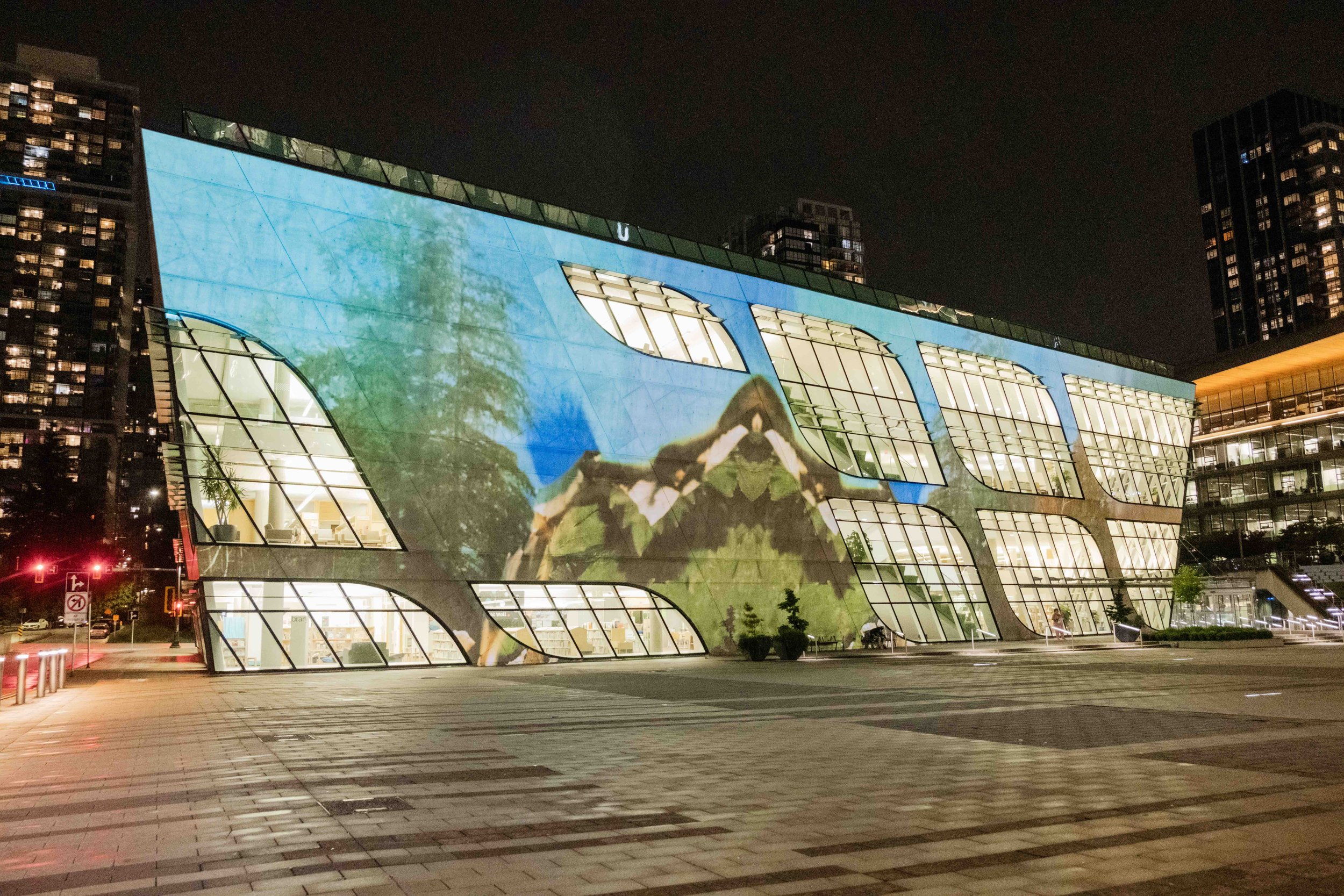New solo exhibition showcases Sho Sho Esquiro's unique mix of couture, Indigenous tradition, and activism
Doctrine of Discovery tackles injustice through fashion, at Bill Reid Gallery of Northwest Coast Art
Sho Sho Esquiro works with pelts and other materials sourced from her Yukon homeland. Photograph by Matika Wilbur
They Stole the Children from the Land, photographed at Notre Dame Cathedral in Paris. Photo courtesy of the artist
The Bill Reid Gallery of Northwest Coast Art presents Sho Sho Esquiro: Doctrine of Discovery from September 22 to June 5, 2022.
IN THE NORTH’S Kaska nation, where fashion designer Sho Sho Esquiro grew up, intricately handmade, durable garments were a deeply ingrained—and essential—part of life.
“I remember it being 50 degrees below zero and cross-country skiing to school,” the New West-based artist, who was raised in the Yukon’s remote Ross River, tells Stir. “We didn't have TV or cable, so being creative was how we lived our life. I've never known fast fashion. Growing up, we were buying quality things, repurposing things, recycling and deconstructing them.
“One of my favourite mentors was my late auntie, Evelyn Jack, and she always had a project going. She’d pull it out of her blue Danish cookie tin, and moose stew would be cooking on the stove, with CBC radio playing, and she would just let me watch her bead,” recalls the artist, who is of Kaska Dena, Cree, and Scottish heritage. “Auntie is making hats and gloves: your husband’s going to be out on the Ski-Doo and you want to make sure you made it quality, because if not, he’s going to get frostbite, or lose a finger or toe.”
Those traditions underlie the beauty of the contemporary gowns and outfits Esquiro makes today, crafted using trade cloths, furs, leathers, hides, beads, and shells sourced directly from the Yukon. That Esquiro also manages to weave urgent Indigenous issues and messages into her exquisitely crafted work is what sets it even further apart—and has earned her a thought-provoking and timely solo show at the Bill Reid Gallery of Northwest Coast Art.
Though Esquiro enjoys seeing her work on the catwalk, you can tell that the museum is where her creations are most at home.
“It feels like a great honour, because a lot of my work has such detail and when you're walking down the runway, sometimes you don't get to see all that detail,” she says. “And also, I look at my work as art. You want to be relevant in the art world; I see myself as an artist. That’s my whole purpose: to bring light to issues that are important to my community.”
Among Esquiro’s earliest, boldest statements came in 2014, with a major collection called Worth Our Weight in Gold, presented in Paris at the Eiffel Tower as part of the J Autumn Fashion Show. She poured hours into painstakingly applying 24-karat gold beads to garments conjured from salvaged fur, leather, and embroidery, in a collection dedicated to Canada’s missing and murdered Indigenous women.
Her No Apology Necessary collection, presented at the Eiffel Tower again in 2019 for International Indigenous Fashion Week, sent a blunt message to Pope Francis and the Catholic Church for their refusal to acknowledge the abuse that went on at residential schools. The back of one fur-collared vest-jacket bore the words “They stole the children from the land, now they steal the land from the children” in glimmering gold. (Esquiro’s adopted and blood fathers both attended residential school and experienced abuse.) Another black leather jacket featured an upside-down image of Pope Francis on its back, in what Esquiro describes as an expression of great distress.
That mingling of activism with virtuosic traditional technique and contemporary fashion artistry has made Esquiro’s work coveted by the likes of electro-rappers The Halluci Nation (formerly A Tribe Called Red) and activist singer-songwriter Buffy Sainte-Marie. Her singular mix also explains why Esquiro’s work is as likely to be shown in a museum exhibition hall as on a fashion runway. Esquiro has displayed her designs in such prestigious institutions as the Smithsonian’s National Museum of the American Indian and the Peabody Essex Museum in Massachusetts.
You’ll be able to see some of the Paris pieces alongside other couture gowns, raw textiles, paintings, and photographs at the Bill Reid Gallery starting this week. Called Sho Sho Esquiro: Doctrine of Discovery, the exhibit is named after the 19th-century international law that once granted explorers the right to claim “vacant land”—territory not already claimed by Christians. Curated by Miranda Belarde-Lewis, the solo exhibition is meant to celebrate the resilience of Indigenous communities in the face of historical and ongoing trauma.
Grace, also called Moma yeh estsu yeh Giyets'edih – Honouring our Mothers and Grandmothers, fashioned from lynx paws, recycled Indonesian prayer scarves, 24K beads, brocade upholstery fabric, twill edging. Photo courtesy of the artist
“My friend from the Yukon says, ‘It’s like you're cutting bush for generations after you,’” remarks Esquiro. “Creating space: that’s so important. Nobody's promised another day, and if I was to pass away, I want my body of work to make an impact.”
Esquiro spent the bulk of the pandemic back in her Yukon homeland, which provided deep inspiration for the show—not to mention materials to work with. Look for images of her nonagenarian Uncle Amos in the exhibit, who once taught her how to work with muskrat and other skins.
“He’s a Yukon national treasure,” Esquiro says. “Sometimes if I visit I get a piece of lynx.”
Integrating those skins and furs, Esquiro’s garments bring to light the dwindling availability of natural and land-based materials. “A large part of this show is in honour of the land protectors and the water protectors,” she explains.
To create the new couture pieces for the show, Esquiro poured her usual hundreds of hours of handiwork into each one.
“When I tell you I’m working on something, I mean I don't do anything else!” she reveals with a laugh. “I get up around 10 am, have breakfast, and then I work to 11 pm. Then I have a nap from 11 to 12 and get up and work 12 to 5 am. I sleep from 5:30 to 6 to maybe 9 or 9:30. So I get about three hours of sleep.
“One of the lessons my mom taught me is to do your best work,” she adds matter-of-factly.
Esquiro’s mother, an artist and animator, has had a momentous influence on her daughter’s practice, encouraging her artistry and working together with her to teach art to youth with Fetal Alcohol Syndrome Disorder. For the first time, at the Bill Reid Gallery exhibit, the two have collaborated on a work—one that takes on the loaded subject of John A. Macdonald, and the toppling of his statue.
“My mom’s side of the family is from the Shetland Islands,” Esquiro says. “One of the materials in that piece is some wool she got me from over there when she visited Scotland.”
Elsewhere in the exhibit, a cashmere dress bears the words “Kill the Indian Save the Man”, painstakingly beaded by Esquiro. The quote comes from 19th-century American army officer Richard Henry Pratt, who developed the first off-reservation boarding school—helping to kick off a misguided century-long push to indoctrinate Indigenous children.
Uncle Amos holding lynx pelts (2016). Photo by Sho Sho Esquiro
“Who wants to bead that? I certainly don't, but all these policies were created and we’re still affected by it,” says Esquiro. “Honestly, sometimes beading that, I would cry. After I started out, something didn't feel right. So I started again, with large words in my own writing—backwards. In the show you have to look in the mirror to read it, and that’s a powerful statement.”
That act of reading in our own reflection captures Esquiro’s heartfelt belief that we are all in this together—and that we must all look inside ourselves and work together to heal through truth and reconciliation.
Over the long hard weeks and sleepless nights that that central exhibition piece took to create, Esquiro found the motivation she needed outside the window of her home by the Fraser River in New Westminster.
“The day I started it, a big eagle came out,” Esquiro says, still emotionally struck by what happened. “And he stayed there until I was done at the end of the month.”
















